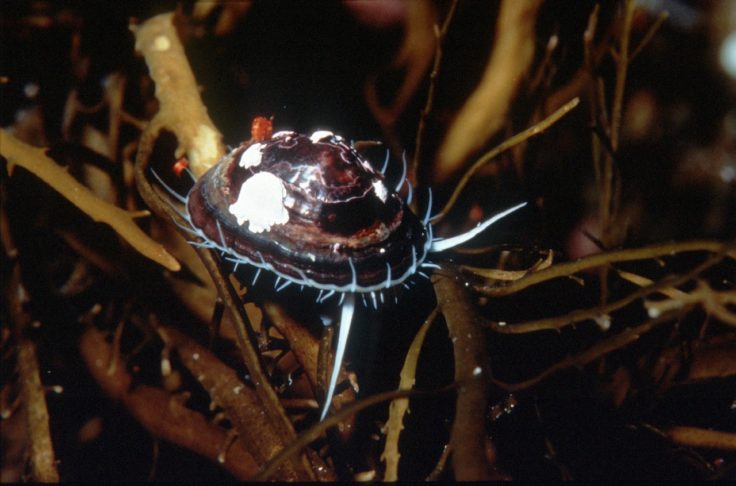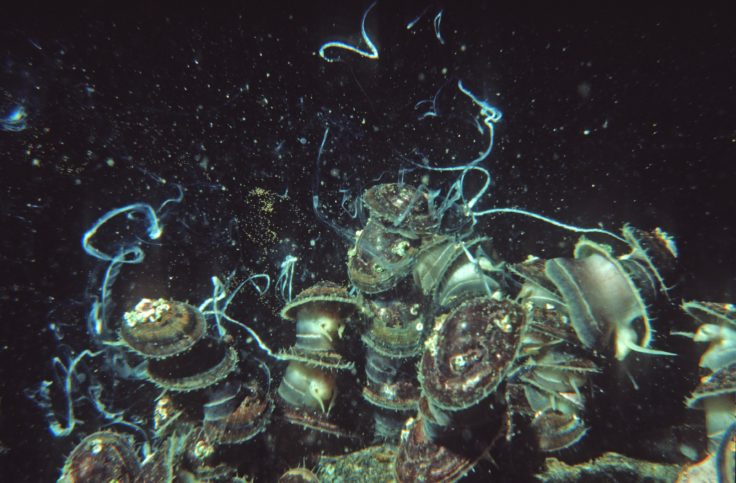New research by scientists at British Antarctic Survey and Bielefeld University explains how the chaotic formation of genetic islands can occur in marine molluscs. Usually, the individuals of a population of marine species that has the potential to disperse over long distances all differ genetically because of the mixing while they disperse. However, at some sites, small groups of very closely related individuals, brothers and sisters, or cousins, can suddenly appear within populations. The study is published in the journal Science Advances and provides a benchmark for better understanding and managing marine populations.
Samples were collected from nine locations in Antarctica between 1999 and 2015 to study the limpet Nacella concinna. Researchers analysed the genomic data and combined them with data from drift buoys, which provided information about ocean currents. Researchers also developed computer simulations in which they recreated the life cycle of limpets to understand what events might lead to the appearance of a ‘genetic island’. The findings were conclusive: the entire generation of limpets in one place descended from a tiny number of parents. The larvae had also moved in unison with the ocean current and thus settled in the same place.
“We have succeeded in bridging the gap between theory and how things are in reality,” says molecular biologist Professor Dr Joseph Hoffman from Bielefeld University, an author of the study.
Whether or not chaotic island formation occurs often depends on coincidences.
“The dispersion of these types of organisms can be geographically limited and unstable over time,” says lead author Dr David Vendrami. “There are a great many theories that try to explain how these genetic islands occur,’ he says. “In practice, however, it has so far not been possible to attribute this to a concrete mechanism.”
The study is a collaboration between Bielefeld researchers and British Antarctic Survey, who collected the data on site.
Professor Lloyd Peck, co-author and science leader in Biodiversity Adaptation at British Antarctic Survey, collected limpet samples while diving in Antarctica and together with Joseph Hoffmann came up with the idea for the study.
“The limpet Nacella concinna is one of the creatures that densely inhabit the shallow waters in Antarctica. Almost 500 animals live there per square metre in some places,” says Professor Peck. Every year, the females release millions of eggs into the water, from which larvae develop. Analysis of the genetic samples from Antarctica clearly showed a genetic island was present and suggested that genetic islands are likely to occur and disappear relatively frequently among these limpets. “We discovered genetic structures in which the animals in the populations are closely related to each other, so that brothers and sisters, and cousins are very dominant in a small area.”

These latest findings do not mean, however, that all other theories regarding genetic island formation are wrong.
Dr Vendrami explains: “An entirely different theory may apply in other cases. Our research design makes it possible to reconstruct genetic islanding in other cases as well and to narrow down the possible causes. In order to understand how marine populations evolve, it is essential to comprehend the mechanisms that influence their genetic diversity. This is important, for example, to be able to better assess the impact of man-made interventions or for managing protected areas and fishing grounds.
“Our findings provide a basis for better understanding and managing marine populations. Anyone managing a protected area, for example, may be concerned if a lot of individual animals in one place are genetically very similar. But it could also just be the formation of a short-term genetic island. If this can be verified, it is easier to assess, for example, whether it makes sense to intervene because a population is at risk, or whether it is possibly just a short-term and random event.”

Sweepstake reproductive success and collective dispersal produce chaotic genetic patchiness in a broadcast spawner by David L. J. Vendrami, Lloyd S. Peck, Melody S. Clark, Bjarki Eldon, Michael Meredith, Joseph I. Hoffman is published in Science Advances: https://www.science.org/doi/10.1126/sciadv.abj4713
